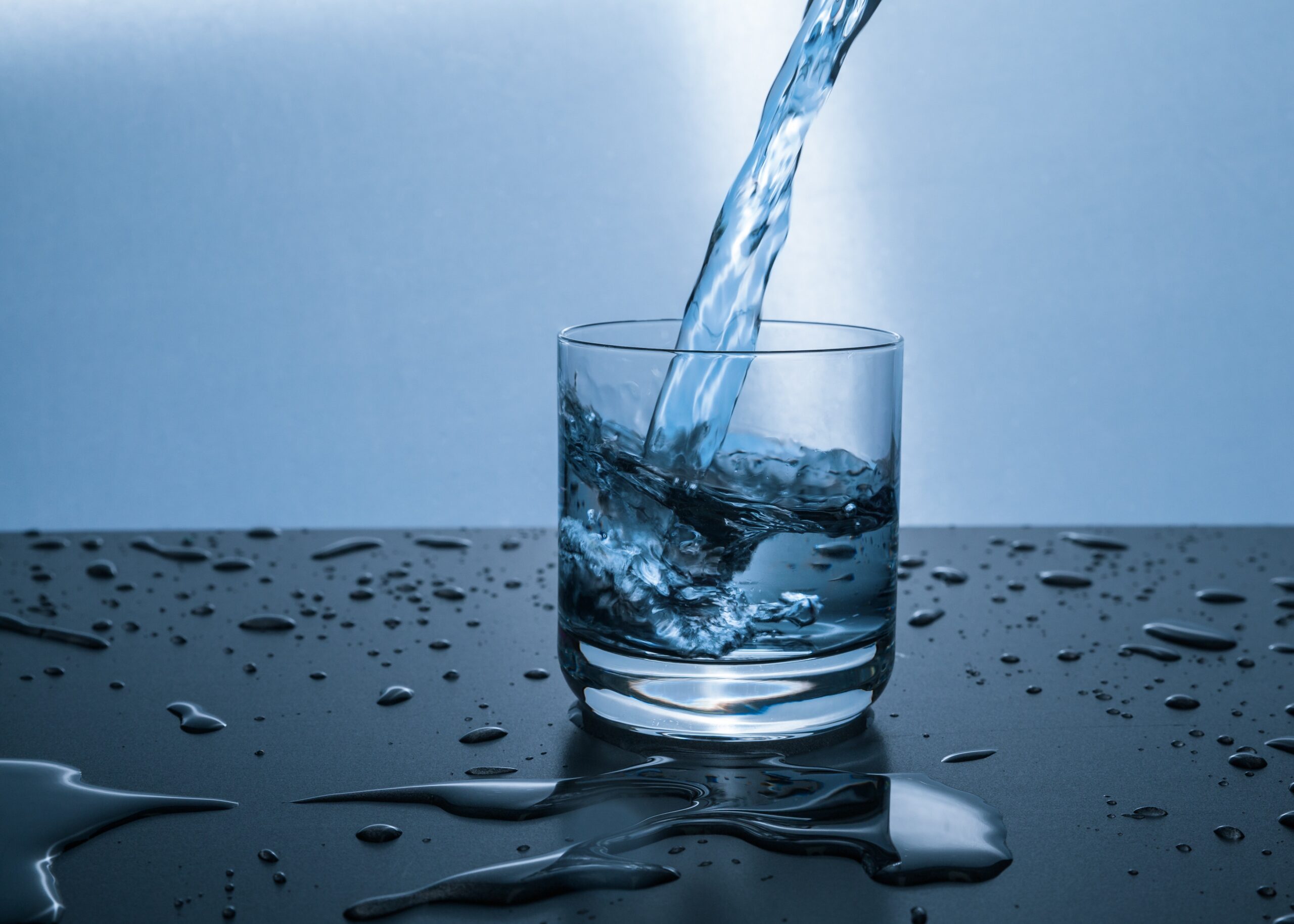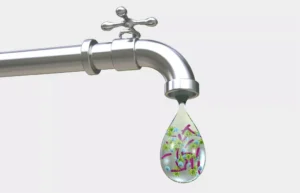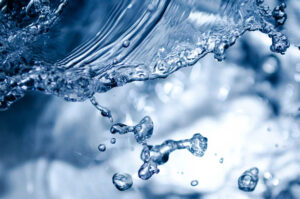Although there are hundreds of drugs, legal and illegal, which enter our water systems, I will just focus on a few and leave out important ones like endo disruptors, which I will discuss at a later time. Every time you flush the toilet, take a shower, or let water go down the drain, you release any drugs you are currently taking into our sewer systems. I have already talked about our disinfecting methods in my previous water blog, and how they destroy bacteria and viruses, but what about drugs?
The EPA (Environmental Protection Agency) passed the Safe Drinking Water Act in order to regulate the disinfection of water all throughout the country and assure that all tap water meets certain standards. Although there are more than 60,000 chemicals used in the United States, only 91 contaminants are regulated by this act, which hasn’t added new chemicals since 2000.
Drugs in tap water
Pharmaceutical compounds commonly enter our waterways when discharged into urine and from feces (1). Many of the drugs from this source enter sewage sludge and never make it into our drinking water. But pharmaceuticals not cleared from this sludge may end up in rivers, which provide 30–4030–40% of our total drinkable water supply (1). Waste water coming from hospitals is especially high in antibiotics, anticancer drugs, and other drugs.
The water acts as a mixing pot for various drugs, which are harmless individually, but when combined, become more toxic (1). The government recognizes that pharmaceutical compounds are capable of entering our drinking water and has set acceptable daily intakes (ADIs), which are levels below which no human harm is expected (1).
“Safe” levels of drugs in tap water
These ADI values are then used to formulate predicted no-effect concentrations (PNEC) for human health from drinking water (1). Models were created to compare PNEC values to predicted environmental concentrations. It is nearly impossible to predict long-term human harm from constant but low levels of various drugs. These models only factor in short-term harm to human health and not long-term harm. Plus, only a handful of the 160 different pharmaceuticals that have been found in the water supply are tested for (there are hundreds of other pharmaceuticals that can be present in our water that are not tested for or are below the testable limit threshold). Do we really want to rely on models created by scientists that say the concentration of drugs is likely not to result in harm to human health? I, for one, do not feel safe drinking any amount of pharmaceutical compounds.
Entrance into the waterways
Municipal wastewater is the biggest contributor of pharmaceuticals to our drinking supply (2). People either excrete them in the toilet through urine or feces or flush expired prescriptions down the drain. Washing, bathing, and showering also contribute. Manure used as fertilizer containing veterinary pharmaceuticals on large-scale farms that run off into rivers is a big source. Leaks from landfills and storage tanks can allow drugs into the water. There may be more methods of entry, but these are the main ones.
Amount of pharmaceuticals in use
Currently, there are over 3,000 pharmaceutical compounds approved for prescription in the US, and hundreds more are available over the counter (3). A 2009 review studied the presence of 20 pharmaceutical drugs and their compounds in US drinking water (3). I am only going to mainly highlight the pharmaceuticals found in ready-to-drink water and not the source water before it is treated.
Studies highlighting drugs found in drinking water
Sixteen of the 18 finished waters (not quite ready to be drunk) had at least one compound present (3). Whether or not pharmaceuticals made it to our drinking water depended upon whether they were oxidized and removed by chlorine or ozone, or if they were resistant to both; if so, they would most likely persist in drinking water (3).
Thirteen of the 15 tap water systems contained at least one target compound (3). Risperidone (an antipsychotic) and norfluoxetine (an antidepressant) were measured in one tap of water. There were two compounds detected in more than half of the tap water systems: phenytoin (an anticonvulsant) and meprobamate (an anti-anxiety) (3). The concentration of carbamazepine (an antipsychotic) did not differ between the finished drinking water and tap water, meaning that whatever steps were taken in the finished drinking water step were not adequate to remove this drug.
A 2007 study analyzed the presence of antibiotics and other drugs in drinkable water from a drinking water treatment plant serving 850,000 people in an urban area (4). Although the large majority of antibiotics that were found in source water were not found in drinking water, a few were. Acetaminophen:.0003 ug/L; Caffeine:.015 ug/L; Carbamazepine (a seizure medication). 029 ug/L; cotinine (a chemical similar to nicotine);.003 ug/L; dehydronifedipine (a metabolite of blood pressure medication). 0006 ng/L were all present (3). If these handfuls of drugs were capable of making it into our tap water, surely many more of the potentially thousands of drugs in the water could survive as well, especially those that are chemically similar to the above-mentioned drugs.
A 2004 study measured pharmaceuticals in drinking water (5). They tested for about 30 drugs and found the same four drugs in tap water as in the previously mentioned study: caffeine (119 ug/L), carbamazepine (.258, cotinine (.025 and dehydronifedipine (.004 (5). A study involving 19 US water systems found two compounds that were detected in more than half of the distribution system waters: phenytoin (an anticonvulsant) and meprobamate (an anti-anxiety) (3).
Effect of drugs on fish
This is a controlled laboratory study, but I found it interesting nonetheless. Rainbow trout were exposed to various levels of the anti-inflammatory drug diclofenac (1, 5, 20, 100, and 500 ug/L) for 28 days. At the end of the study, the lowest observed concentration to have an effect on the liver, kidneys, and gills was 1 ug/L (6). There were significant effects on the gills, kidneys, and liver. In the gills, there was necrosis of cells and hypertrophy of cells. In the liver, there was a collapse of cellular compartmentalization. In the kidneys, there were structural alterations and a severe accumulation of proteins.
I understand that we are not fish and that this was a controlled experiment, but this demonstrates how high levels of this drug can cause alterations in many of the organs. The concern in humans, however, is the effect of miniscule amounts of pharmaceuticals that accumulate in our body tissues over time. This issue is much more difficult to study.
Why testing for chemicals is difficult and costly
Many of the pharmaceuticals that scientists would like to test for in the water do not have available libraries to compare the chemicals to. There are specialty libraries for these drugs, but chemists rarely use them. Analytical reference standards are difficult to find and costly. The fact that most of these drugs are water-soluble makes common and cheap testing methods difficult to use. Another challenge that is being resolved with new technology is that testing kits were not capable of detecting drugs that fell below their limit, which was very common in the water samples, which contained extremely low levels of drugs (7).
Discussion
Since the government does testing on such a minority of possible drugs in tap water, the full extent of drugs in our drinking water can only be speculated. While the large majority of drugs tested were broken down before reaching tap water, a few made it through, albeit in very small amounts. The fact that only twenty drugs were looked for and a few were found makes me believe that if we tested for hundreds of drugs, we would find a similar percentage, which would be a few dozen drugs in our water. Unfortunately, the government is very lax about testing our drinking water for pharmaceutical drugs, so we must speculate. Currently, there are no regulatory requirements for the monitoring of pharmaceuticals in drinking water (8).
Critics will say that even if drugs are in our drinking water, they are in such small amounts as not to cause any harm. This is only speculation on their part, without any scientific basis. Show me a study where they studied the ingestion of small amounts of drugs over the lifespan of an individual. This is impossible to do, so scientists must generalize from short-term studies using high drug amounts (in animals nonetheless), which have little relevance to long-term ingestion of small amounts. I believe the only acceptable level of drugs in our water should be 0, not some extremely small decimal.
Pharmaceuticals are made to have specific effects on our physiology, so even small amounts over time may negatively impact us in ways that affect our heart, our rates of cancer, or our organs. My philosophy is to consider chemicals and drugs as harmful until proven otherwise, which is counter to the government’s stance, which many times labels chemicals and drugs as safe until proven otherwise. If in doubt, assume it is harmful. There are so many different classes of drugs, so it is unlikely that our disinfecting methods will be able to break down all of these compounds.
As frightening as ingesting various amounts of unknown drugs sounds, my primary concern with tap water is actually the presence of chemicals discharged from chemical factories, runoff from landfills, and herbicide runoff from farms. These chemicals include flame retardants (175 types) and plasticizers (which have weak estrogen effects), which find their way into our drinking system. I will try to write about this in the coming weeks!
If you want to get a quick glimpse of some chemicals the EPA tests for, check this out: http://water.epa.gov/drink/contaminants/.
Sources
- Touraud, E., Roig, B., Sumpter, J. P., & Coetsier, C. (2011). Drug residues and endocrine disruptors in drinking water: risk for humans?. International journal of hygiene and environmental health, 214(6), 437-441.
- Ternes, T. A., Joss, A., & Siegrist, H. (2004). Peer reviewed: scrutinizing pharmaceuticals and personal care products in wastewater treatment. Environmental Science & Technology, 38(20), 392A-399A.
- Benotti, M. J., Trenholm, R. A., Vanderford, B. J., Holady, J. C., Stanford, B. D., & Snyder, S. A. (2008). Pharmaceuticals and endocrine disrupting compounds in US drinking water. Environmental Science & Technology, 43(3), 597-603.
- Stackelberg, P. E., Gibs, J., Furlong, E. T., Meyer, M. T., Zaugg, S. D., & Lippincott, R. L. (2007). Efficiency of conventional drinking-water-treatment processes in removal of pharmaceuticals and other organic compounds. Science of the Total Environment, 377(2), 255-272.
- Stackelberg, P. E., Furlong, E. T., Meyer, M. T., Zaugg, S. D., Henderson, A. K., & Reissman, D. B. (2004). Persistence of pharmaceutical compounds and other organic wastewater contaminants in a conventional drinking-water-treatment plant. Science of the total environment, 329(1), 99-113.
- Triebskorn, R., Casper, H., Heyd, A., Eikemper, R., Köhler, H. R., & Schwaiger, J. (2004). Toxic effects of the non-steroidal anti-inflammatory drug diclofenac: Part II. Cytological effects in liver, kidney, gills and intestine of rainbow trout (Oncorhynchus mykiss). Aquatic toxicology, 68(2), 151-166
- Daughton, C. G., & Ternes, T. A. (1999). Pharmaceuticals and personal care products in the environment: agents of subtle change?. Environmental health perspectives, 107(Suppl 6), 907.
- Jones, O. A., Lester, J. N., & Voulvoulis, N. (2005). Pharmaceuticals: a threat to drinking water?. TRENDS in Biotechnology, 23(4), 163-167.





I read once that basically since the 90’s and average person gives more than the triple of work to its kidney, derivated on drugs and metals contained in “polluted water”. I worked for a little while in a laboratory and I can give proof of the amount of Calcium, Magnesium and other stuff contained in the normal water we have everyday.
But with this topic we have a big issue. Water by nature is the natural disolvent of everything! Maybe we just need to “cross fingers” that this plain water is not so toxic! Even though, I guess taking this “risk” is even better than having a soda hehe..
Nice post Rob!
I have not looked into metals in tap water yet so this is interesting information for me. Yes water is the universal solvent so a lot of water soluble drugs are able to disolve into water. I would think that metals in tap water may be one of the harder substances to remove. Kidneys do the majority of work filtering toxins so water with high amounts of metals that we do not absorb would impact the kidneys and increase its work load. I have been using more distilled water and less tap water since writing these blogs on water. There are so many chemicals in water, cosmetics, air freshners, cleaners, emissions from cars that I have a hard time believeing that all of these elements combined do not negatively affect our body and increase the risk of certain diseases.
I usually think of drinking clean water clear from bacteria, but I never paid much attention into drinking water clear from drugs; until I read this article. Based on your last water article and this one, I would start drinking more distilled water now. It is scary how nothing appears to be 100% natural, not even water. 🙁
I agree it is kind of scary. I started using more distilled water for cooking my rice and making my tea. There are also likely pesticides in our water from run off on farms but I will talk about that in the coming months